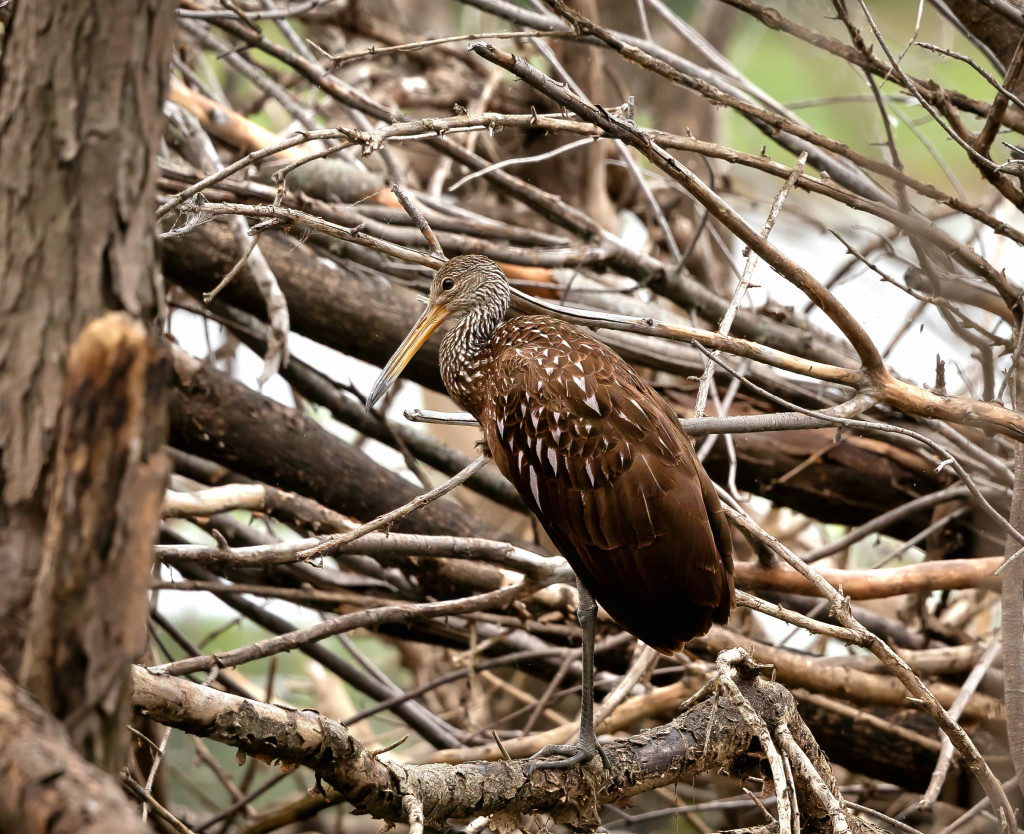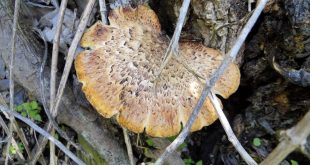Enlarge

Photo by Karen Kader
By Joel Jorgensen, Nongame Bird Program Manager
A few years ago, if someone raised the possibility of a limpkin reaching Nebraska, an appropriate response would have been “when pigs fly.” That is because, not long ago, limpkins were restricted to Central and South America, the Caribbean and Florida. In North America, any limpkin wandering north of the sunshine state would have been big news. Over the past two decades, limpkins began to increase in Florida and push a little farther north. Still, for the longest time, the idea of a limpkin in Nebraska would still have been unfathomable. It has only been within the last five years that limpkins have done the unthinkable and with each passing year, their story becomes more unbelievable.
Limpkins are an odd, brown waterbird with white spots. The species is related to cranes and rails, and its appearance falls somewhere in between. Limpkins wade in water, somewhat like a heron or ibis, where they hunt for preferred prey, which is predominantly large snails and mollusks. However, the limpkin is unique as there is no other species like it in the world.
In 2017, limpkins were reported in Louisiana with other singletons making appearances in Tennessee and Virginia. In subsequent years, the number of reports north of Florida continued to grow. By 2021, limpkins were found breeding in Louisiana and moving into Texas. Single birds also reached Arkansas, Illinois and even Minnesota. In June 2022, Karen Kader was birding at Chalco Hills Recreation Area in Sarpy County and amazingly discovered Nebraska’s first limpkin. Later the same day, Iowa recorded its first limpkin. Nebraska’s limpkin remained in the state into October and by then, multiple birds had been recorded in Iowa, Kansas and many other nearby states. By late 2022, a limpkin popping up anywhere in the eastern U.S. was no longer unexpected.
At one time, limpkins were at risk of being wiped out in the U.S. because of unregulated hunting and wetland loss. What could explain their recent and sudden break out from Florida? Could the birds be displaced by widespread habitat destruction or drought in Florida? Or is this a case of a population boom? Limpkins are a native bird, but their story appears to be linked to the rapid spread of an entirely different animal that is, in fact, an invasive species.
One preferred food of limpkins are large apple snails that are native to Florida. However, another nonnative apple snail species has been introduced and has spread rapidly along the Gulf Coast. Limpkins will readily consume both native and invasive apple snails and this new, abundant food resource is likely fueling the limpkin explosion. The invasive apple snails are cold sensitive and have not spread north to Nebraska. However, another large snail, the Chinese mystery snail, has been introduced and has infested some waters in Nebraska and the Midwest.
The limpkin discovered at Chalco Hills Recreation Area spent most of its time in an impoundment where there was an abundant supply of these Chinese mystery snails, and several observers that came to see the limpkin observed it devouring several large helpings of these snails.
Invasive species are generally bad news for native species and ecosystems, and invasive snails are no exception. The fact that invasive species may be leading to population increases and range expansion of a quirky, albeit interesting, native bird is not necessarily anything to celebrate. What remains to be seen is where this story ends.
If limpkins are now breeding in Louisiana, perhaps they will spread all along the Gulf Coast where there is seemingly substantial, suitable habitat and no shortage of invasive snails. At a minimum, we can likely expect limpkins to become a more frequent visitor to Nebraska. However, if the last two years are any indication, the limpkin saga may still have many more surprises in store. In short, pigs still can’t fly, but limpkins can.
 Nebraskaland Magazine
Nebraskaland Magazine
